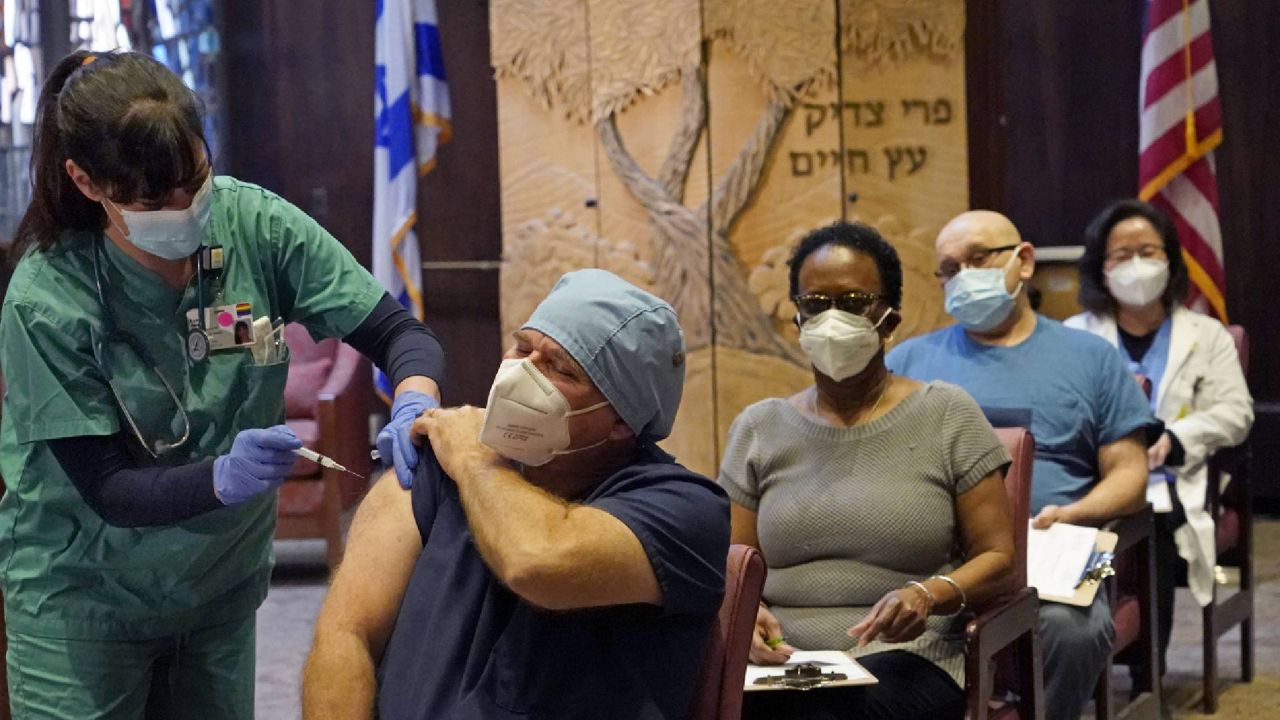On Wednesday, officials overseeing the country’s vaccine effort acknowledged that vaccinations are going slower than they hoped, and they said they are working to increase the rate of vaccinations in the coming weeks.
“We know that it should be better and we are working hard to make it better,” said Dr. Moncef Slaoui, Chief Scientific Adviser for Operation Warp Speed, in a briefing Wednesday.
Officials addressed the lower number of vaccinations as it became clear that the U.S. is likely to miss its goal of vaccinating 20 million Americans by the end of the year. Currently, the Centers for Disease Control and Prevention tracker shows just over 2.5 million administered doses, though officials say there is a lag in reporting data.
Officials working on Operation Warp Speed said they have allocated enough doses — 19.88 million — to nearly reach their year-end goal. But the actual number of shots administered falls far short of 20 million.
“We always have to continue to assess and adjust,” said General Gustave Perna, who oversees vaccine distribution, noting that he expects vaccinations to speed up as vaccines begin to be distributed to pharmacies like CVS and Walgreens.
While federal officials are in charge of securing and shipping vaccine doses, they’ve put the responsibility of giving the shots entirely on state officials, who were responsible for creating their own distribution plans.
But how health departments distribute the vaccine has varied widely from state to state and even from county to county, while states like Texas have thousands of vaccines sitting on shelves, unused.
“I have a lot of confidence, personally, that the states … are working this aggressively,” Perna said Wednesday.
Officials also noted that data on the number of administered doses can sometimes be delayed in getting to the CDC by three to four days.
"There is an expected lag between shots going into arms and the data being reported," Michael Pratt, a spokesperson for Operation Warp Speed, said in a statement to Spectrum News.
Health and Human Services Secretary Alex Azar and other officials working on the vaccine have said they expect to vaccinate even more people — 30 million — in January and another 50 million in February. Now, it’s likely that states will have to catch up on December’s goal while trying to reach the next months’ thresholds.
On Wednesday, Dr. Slaoui said the country should have enough manufactured doses to vaccinate the country’s vulnerable populations by the end of March and begin making doses available to the general public starting in April.
But the slower rate of vaccinations is likely to delay that timeline unless the pace quickens in the coming days.
“We should be looking at the rate of acceleration over the coming weeks, and I hope it will be in the right direction,” Dr. Slaoui said.
Still, officials praised the quick rollout of vaccine shipments across the country.
"These doses are being distributed at states’ direction to the American people as quickly as they are available and releasable, and the rapid availability and distribution of so many doses ... is a testament to the success of Operation Warp Speed," Pratt said.
“Everybody, collectively, should be very proud,” General Perna said. “We work every day to make sure that the vaccine gets to where it needs to be. We are out checking.”



